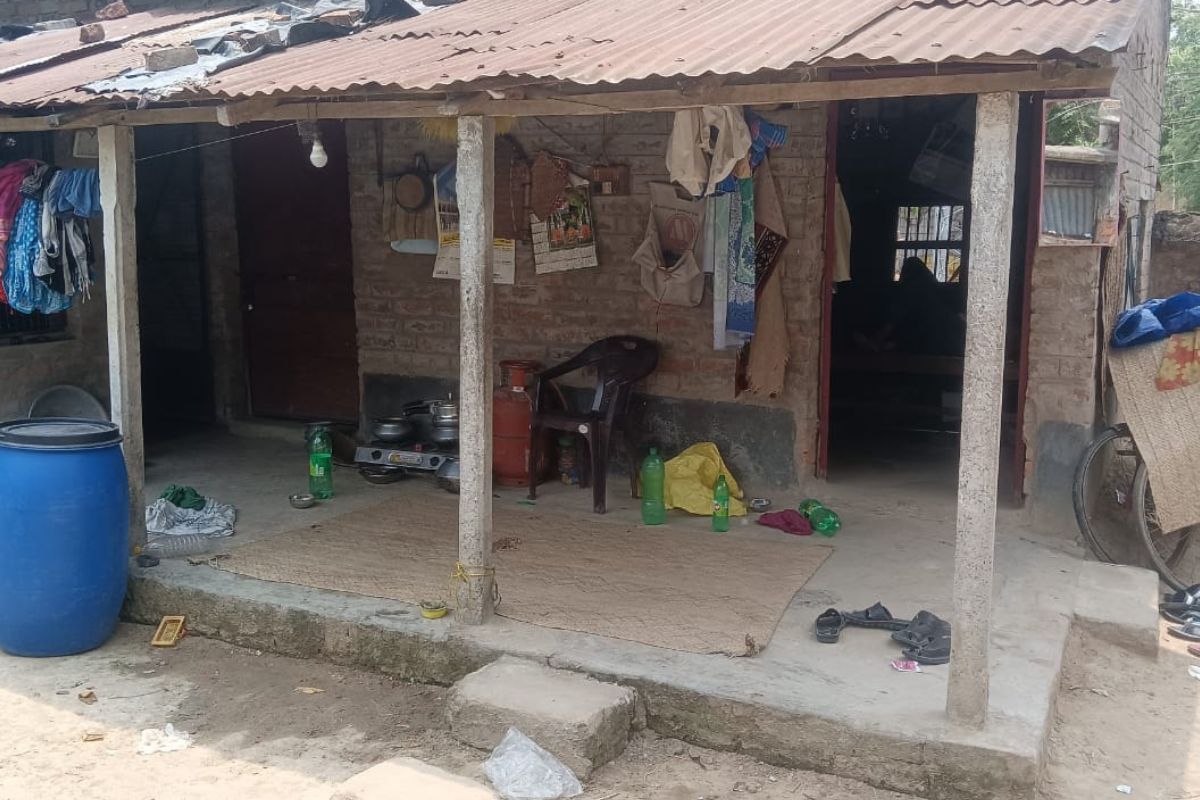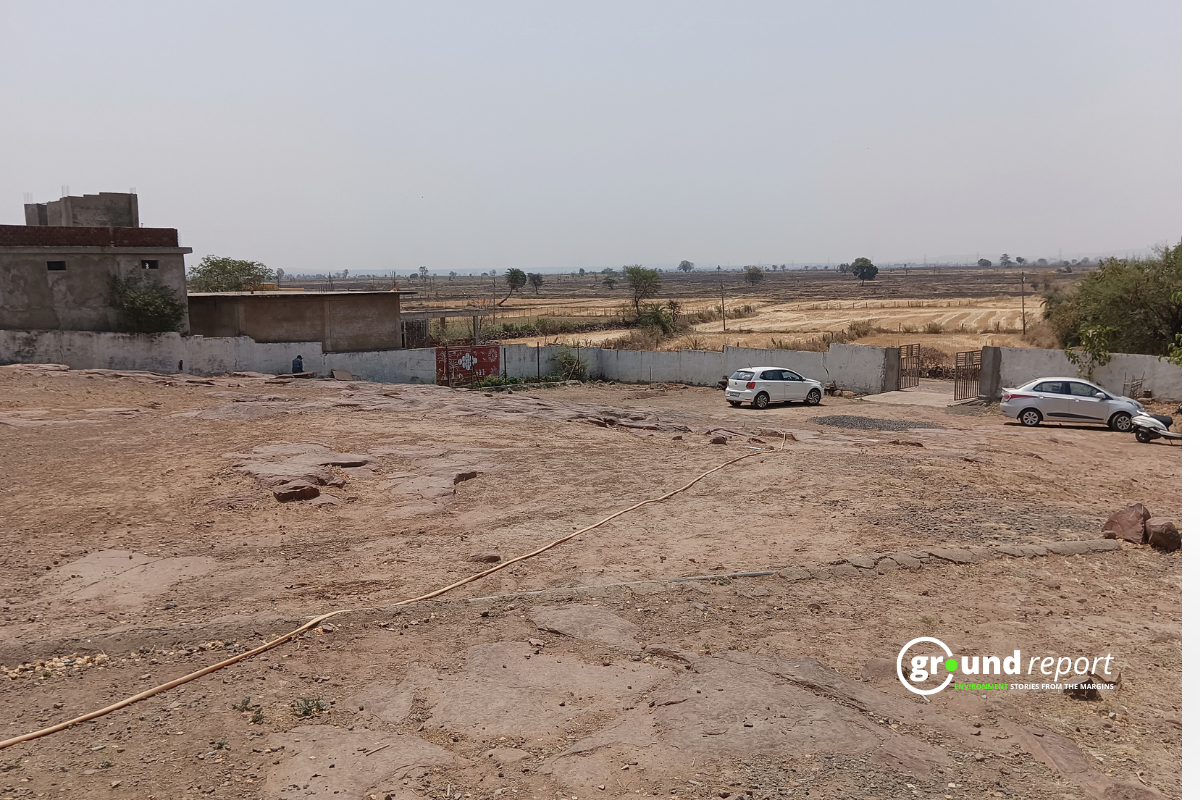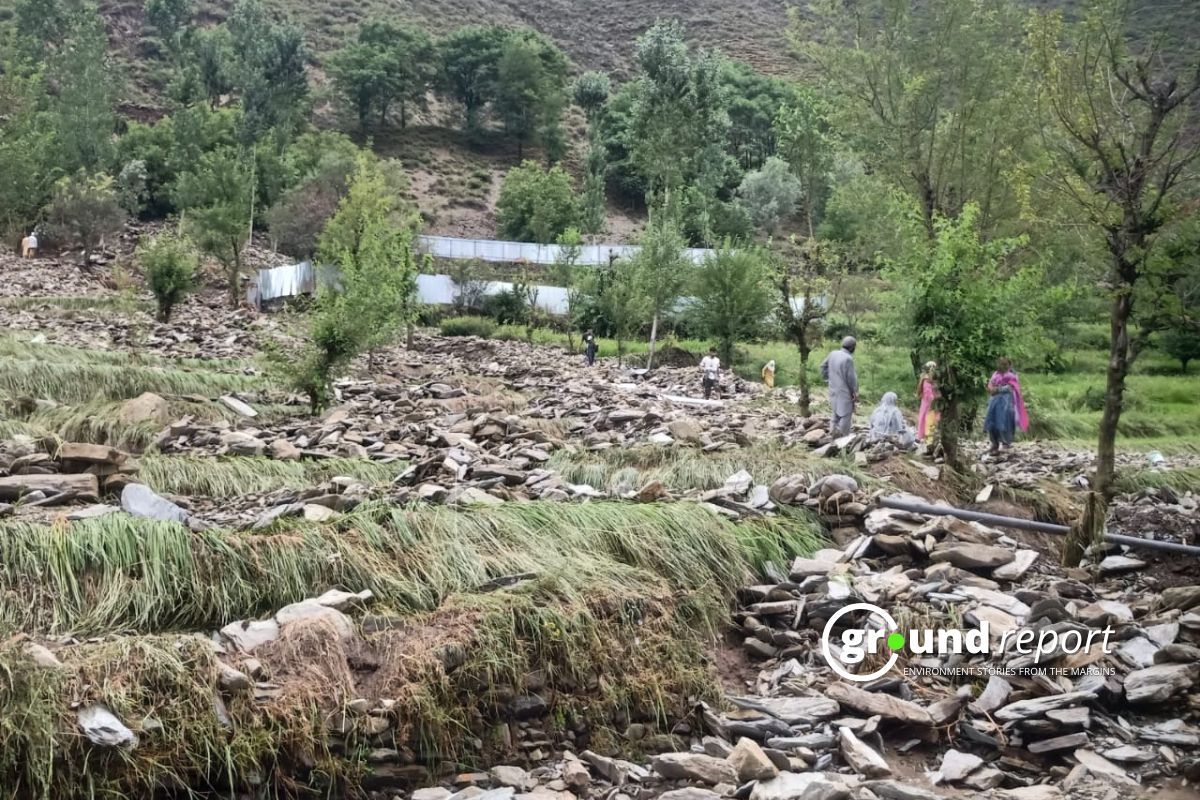On June 10th, around 6 PM, a tragedy occurred on the rain-slicked roads of Birbhum district, West Bengal that forever changed the lives of the Samsujjoak family. Shikh Samsujjoak, his wife Robina Biwi and their 13-year-old son set out on their motorbike to visit Samsujjoak’s brother, Munshi Muneerul Haq. The family was travelling from Nanoor village in light rain and gusty winds. Their bike crawled along the wet road as the sky grew ominous.
“We were on the bike when it happened– the lightning struck,” Samsujjoak told Ground Report. “I don’t know what happened for almost half an hour. When I started feeling better, I saw my son beside me, but my wife was lying a bit far away. She died immediately.”
The lightning strike killed Robina instantly, leaving a devastated husband and two young sons.
Lightning strikes killed 12 people in East Burdwan and Bankura districts in West Bengal over two days. The regions experienced intense thunderstorms with multiple lightning flashes during late afternoons. East Burdwan recorded eight fatalities while Bankura reported four. Most casualties occurred as villagers tended to cattle in farmlands or courtyards, unaware of the danger.
Tragic lightning strike changes family’s fate
“Right now, it feels like everything has stopped,” Samsujjoak said, struggling to cope with the sudden loss. “She was my support, doing everything for our family. I keep thinking about my wife, and how suddenly she was taken from us. One moment we were together enduring the rain, and the next… she was gone.”

As the grieving father contemplates the challenges ahead, he faces hurdles in navigating bureaucratic processes for compensation. “I went to the district office,” he explained. “They told me to bring documents—a death certificate, a post-mortem report, and other documents. Then I went to the police station, but they said it would take almost a month for the death certificate. I don’t know what to do. I don’t have enough money to keep travelling from one office to another. Losing my wife wasn’t enough; now I have to navigate this paperwork just to get some help.”
The Samsujjoak family’s tragedy wasn’t isolated. The same storm claimed more lives in East Burdwan district, where brothers Bijoy Ghosh (55) and Ajit Ghosh (59) from Kanaidanga village met a similar fate. In the same district, Jillal Molla (62) of Thyangapara village also died from a lightning strike, adding to the death toll.
Lightning deaths in West Bengal
According to a state government report, West Bengal has reported 1,459 lightning deaths from 2018 to July 2023. The statistics show peaks in mortality, with 304 deaths in 2018, 295 in 2020, 265 in 2019, 260 in 2021, and 229 in 2022, highlighting the persistent threat posed by lightning.
H.R. Biswas, head of the weather section at the Regional Meteorological Centre in Calcutta, emphasized the importance of seeking proper shelter during thunderstorms. “Get inside a building and stay indoors till the storm passes, instead of under trees or shacks,” he told Ground Report.
West Bengal had the highest number of lightning strikes per square kilometre in India last year, according to the 2020 South Asia Lightning Report. In the Himalayan region of West Bengal, where frequent lightning strikes (100-120 days annually), the risks are pronounced due to cumulonimbus clouds reaching 12-15 kilometres. Thunder and lightning are most likely when cloud temperatures range from 0°C to -40°C, posing hazards for vulnerable communities.
Meteorologists attribute the increased lightning to the dry and hot weather, creating an environment conducive to cumulonimbus cloud formation, thunderstorms, and lightning. When these clouds interact with the moist air from the Bay of Bengal, it produces intense electrical activity.
Ground Report attempted to contact Archana Wankhede, Sub-Divisional Officer (SDO) of Katwa, for comments on the incident, but she did not respond. The story will be updated, as and when she responds. The Mongalkote Police Station also refused to comment.
India sees rise in lightning
Researchers from the Divecha Centre for Climate Change at the Indian Institute of Science (IISc), Bengaluru, noted a 25% increase in lightning events across India from 1998 to 2014, with a significant 34% rise in the last two years. Climate change worsens the situation. Warmer air holds more moisture, leading to more thunderstorms and lightning strikes. A 2021 study predicts a 10–25% increase in lightning frequency and a 15–50% intensity increase in India by the century’s end.
Ground Report previously reported on the impact of lightning strikes on nomadic communities in Jammu and Kashmir, highlighting the administration’s inaction. Recent tragedies in East Burdwan and Bankura underscore the urgent need for strategies to reduce risks and enhance community preparedness for these deadly natural phenomena.
Keep Reading
Part 1: Cloudburst in Ganderbal’s Padabal village & unfulfilled promises
India braces for intense 2024 monsoon amid recent deadly weather trends
Support us to keep independent environmental journalism alive in India.
Follow Ground Report on X, Instagram and Facebook for environmental and underreported stories from the margins. Give us feedback on our email id greport2018@gmail.com.
Don’t forget to Subscribe to our weekly newsletter, Join our community on WhatsApp, and Follow our YouTube Channel for video stories.








